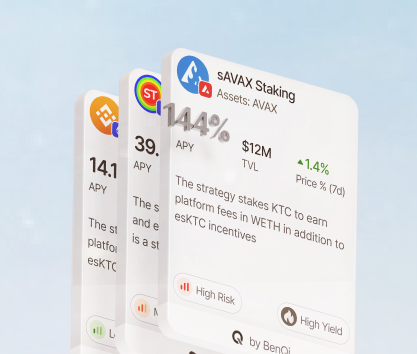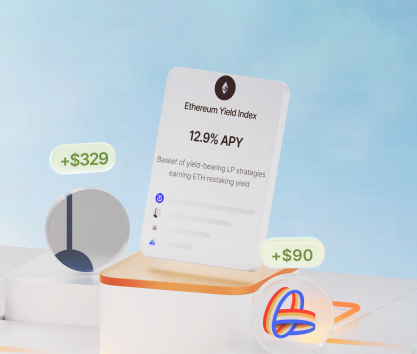The DeFi sector has grown by at least 120% since the beginning of 2024. While it is still way below the ATH of $177 billion achieved at the tailgate of 2021, the positive dynamic of the sector proves that there is some significant interest in decentralized finance across the cryptocurrency ecosystem. It seems that the growth of active users is driven, in part, by the influx of beginners who do not have much experience with DeFi.
Learning the best DeFi investment strategies to allocate capital in this sector is crucial for all investors, experienced and novice. Let’s talk about the most effective strategies and great instruments available to crypto investors all over the world. The decentralized finance ecosystem has a wide range of different options for all sorts of investors.
Crypto asset allocation methods
One of the advantages of using DeFi protocols for investment is the novelty and hype that attracts cash inflows. The value of many cryptocurrencies is growing at a steady pace thanks to the bullish trend in the larger crypto ecosystem.
Another important factor is the sheer diversity of platforms. Investors have access to a rich variety of investment options including all sorts of staking mechanisms that became popular after Ethereum’s switch to PoS. Some believe that the sheer number of efficient blockchain investment techniques creates challenges for investors.
Users now can work with over 5,200 decentralized protocols operating close to 11,000 pools with the combined TVL of over $119 billion. Newcomers without any prior experience with cryptocurrencies will struggle to find valuable options in this ocean of opportunities. Even seasoned veterans often find it difficult to allocate capital effectively.
Let’s talk about various ways to make money by interacting with a wide range of decentralized protocols.
Decentralized exchange trading
DEXes are the backbone of the DeFi ecosystem. They provide the necessary means to exchange and swap digital assets. You can make money on these platforms using several approaches:
- Providing liquidity to pools that make swaps possible.
- Receiving native tokens and other rewards for liquidity provision.
- Make profitable trades using the same methods you would use on CEXes.
DEXes represent the biggest share of the DeFi ecosystem in terms of the number of protocols. The category contains over 1,550 exchanges with a combined TVL of over $25 billion. It is, by far, the most popular destination for crypto investors.
Liquidity mining strategies
DEXes, AMMs, and many other protocols desperately need operational funds to keep everything running smoothly. Providing liquidity to various protocols can be an effective way to create a source of passive income.
Strategies involving liquidity provision for rewards can be quite sophisticated since reward structures and types of native tokens or special privileges given to investors vary greatly. The combined TVL of protocols specializing in different types of liquidity mining is close to $10 billion excluding some DEXes, bridges, and other platforms offering rewards.
Here are some of the interesting options that can be explored in this particular sector of the ecosystem:
- Curve DEX is the biggest decentralized exchange offering rewards in CRV and CVX to liquidity providers. The DEX operates 563 pools with an average APY of 8.39%. CRV tokens can be traded on most exchanges or used in governance. Alternatively, you can invest with Convex Finance which operates on the Curve DEX exclusively.
- Pendle is another interesting choice for people who want to engage in effective yield farming strategies. Rewards vary depending on different factors and market circumstances although the biggest chunk of profits is distributed in PENDLE tokens. The protocol has 114 pools with an average APY of 15.58%. PENDLE APYs range from 0% to 19.41% in January 2025.
- Aura is also a great choice for yield generation. Here, you can expect to earn 5.98% on average by investing in one of 129 pools. This protocol is deployed on the Ethereum mainnet but supports 9 chains including Gnosis, Polygon, and Optimism. If you are interested in diversifying your investments by allocating capital to multiple chains, Aura is among the most suitable blockchain financial instruments.
While liquidity mining is a good choice for many investors interested in passive income, you can reduce potential risks by creating a safer portfolio.
One of the greatest things about lending in DeFi is that all loans must be collateralized. Flash loans are an exclusion but they must be repaid before the final settlement so they can be considered safe options for lenders too. Many experts believe that reducing exposure is the most important task for any investor. If you are interested in preserving wealth, lending is a reliable source of consistent returns.
Investment risk assessment can be quite difficult for newcomers. This means that even without large capital, you can pick lending as the main investment target since it is the safest option. You can choose from over 470 protocols with a combined TVL of $50 billion.
Here are some examples of capital allocation in this sector:
- Aave on Ethereum is the biggest lending platform with a massive $21 billion TVL. If you are looking for reliable smart contract investments in the DeFi ecosystem, choosing Aave is a wise decision. The protocol has 142 pools with an average APY of 2.42% in January 2025.
- Justlend is the biggest lender on Tron. Here, you can allocate funds to 17 pools with an average return of roughly 1.1%. The protocol is focused on stablecoin lending and will work well for many conservative investors. Building DeFi passive income with this particular platform is more than possible.
Lending is safe and you don’t receive the high-risk premium often offered by many other protocols with more “adventurous” investment products. On the other hand, you can find reliable options that consistently beat high-yield bank accounts and US Treasury bonds (roughly 4.1% in 2024). Other options that have more lucrative risk premiums may be more interesting to some investors.
Other cryptocurrency-earning opportunities
We won’t cover some of the more exotic, novel investment options available to DeFi users. However, they do deserve a mention. If you want to work with something more profitable that exposes you to bigger risks, take a closer look at some of the strategies below:
- Yield aggregators and strategy providers. You can work with such protocols and companies to optimize profitability. For instance, you can go to Rivo and pick one of many crypto index funds to partake in instead of trying to find the most promising protocol or token. This is a good choice for newcomers and people seeking hands-off investment experience.
- Yield farming can be quite profitable if you can time your exit well. Many great DEXes offer exorbitant APYs to liquidity providers. Aerodrome on Base or Orca on Solana a good places to invest in various promising projects to extract huge base and reward APYs. For instance, Aerodrome offers 332 pools with an average APY of 90.99% as of the time of writing.
Understanding token economics and various factors affecting different digital assets issued by protocols is crucial if you want to extract value from your investments in yield farming strategies. By allocating capital to different pools and assets, you will inevitably balloon the size and composition of your holdings. In many cases, it is quite difficult to find the right balance and create a consistently performing strategy.
Focusing on efficient crypto portfolio management is hugely important. Check out user-friendly wallets like the one offered by Rivo and test trackers that promise a great user experience.









